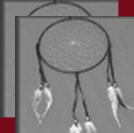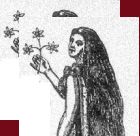| ||
|
|
Orsolya Gállos
SLOVENE WAYS FROM THE PERIPHERY TO THE CENTRE
For many centuries, the Slovene of Karintia, Krayna, Stayer and of Primorska (Coastal Region) have lived in the hereditary provinces of the Habsburg Empire (between 1867� the Austrian-Hungarian Monarchy). For a thousand years[1], intellectually and economically, they have oriented themselves towards Austria, Italy and Germany and on the Prekmurje (the Mura Region) towards Hungary. They always felt pushed to the edge of important European events, to the margin of the great Central-European empire and that of the federal state of the Balkan emerged in the 20th century. Their literary pieces often textualise how individuals and communities make efforts to get closer to the centre or reflect on the experience of being cast out of it. This centre is Western Europe itself. For instance, in the works of Drago Jancar there are such centres as the unconquerable fort of Augsburg[2], the cathedral of Cologne, which keeps relics in the novel, Katharina, the Peacock and the Jesuit (my translation of the title) [Katarina, pav in jezuit], and the native town of Lojze Kovačič, Basel, from which the author travels to the Balkans. Regionalism plays a pivotal role in Slovene culture as they live at the meeting point (and also the edge?) of four great European regions: the Mediterranean, the Alps, Pannonia, and the Balkans. The Slovene regions of Prekmurje, Stayer, Karintia, Lower, Upper and Inner Slovenia and Primorska are practically attached to these major regions. Besides the consensual Slovene centre, the capital Ljubljana, there are strong regional centres as well. As long as the Habsburg Empire existed, the provinces populated by the Slovene were located at the edge of its territory. They considered themselves a peripheral, small folk of a multiethnic great empire, an ethnic group which does not have outstanding politicians and, thus, is ruled by others and is determined to assimilate in the long run. Their philosophers often defined their position from the point of view of periphery and centre. Until the collapse of the monarchy Vienna and, secondly, Trieste served as the intellectual centre of orientation for the Slovene. Since the 1980s they have reinterpreted their thousand-year long existence as part of the Habsburg Empire several times – seeing what a huge difference it is to be the province of Vienna or Belgrade. Ivan Cankar is often cited in this context, who claimed that despite the fact that the Slovene are linguistically related with the Southern Slavic people, they have much more in common with some peasants from Friuli or Tirol even if they speak a different language. This is not by chance, because if we take a look at the map we will see that Slovenia is not only the edge of something, but also a significant meeting point of Europe's great cultural trends. Their region and as a result, their culture have the double attribute of being a crossroads and a periphery as well. The most explicit feature is the close location of the Mediterranean. The high mountains in the background, the Alps, also play central role in the Slovene's self-definition. They are not only a link to the German language area but also to Giulia, Friuli, Veneto and Venice. Near the Mura the Slovene and the Hungarian have coexisted since the Hungarian conquest. The regional identity of the Prekmurje is very strong in contemporary Slovenia, too, as this territory belonged to Hungary until 1918 and was quite far from the cultural centres of Krayna and Karintia. Slovenia's relationship with the Balkans is complicated. This part of Europe is usually mentioned with distrust. Its boundaries are anxiously reconsidered from time to time and nobody is willing to belong to this damned place. It was, however, after the separation in 1990/1991 that the relationship with the Balkans was deeply analysed by such significant Slovene writers-philosophers as Drago Jancar or Aleš Debeljak[3], in addition to the diaries and poems written in Sarajevo and Belgrade by Boris A. Novak. ”Oton župančič outlined the Slovene intellectual space in his well-known poem, The Map [Zemljevid] (1908): When the others conquer further and wider spaces,/clan, living here, will you be strong in your heart? Oh, what are your fates, our four boundary-stones, Kalgenfurt, Maribor, Gorizia, Trieste?[4] More than eighty years later, i.e. at the moment of Slovene independence, three boundary-stones are still missing from the construction of the Slovene nation”, Aleš Debeljak warns in his collection of essays, Europe without Europeans [Evropa brez Evropejcev]. The Slovene prose writer, Lojze Kovačič (1928�), did not follow the accustomed trends of getting acquainted with literature and language. Typically, it is the authors of Central Europe who move to the West, while he arrived in Slovenia from the West. This turning point in the life story of Kovačič and his family, is the exclusive subject of his shorter and longer fiction. This great figure of Slovene epic in the last fifty years was born in the Swiss city of Basel in 1928 – the son of an emigrated Slovene tailor and a German mother from the Saar Region. In 1937, before the outbreak of the Second World War, the Swiss state made them leave the country together with the other foreign workers. [...] „Consequently, they arrived in the father's village in the middle of the night during a flood. ...”[5] They would slowly realise the difference between the urban and rural way of life. Suddenly, the author got from the Swiss city populated by Germans, French, Italians, from the German language of Basel, the city of banks, jeweller's, carnivals, places of entertainment, harbours of the Rhine and, and from the strictly separated social classes, to a Northern point of the Balkan hard to describe, near the town of Novo Mesto, Slovenia, the royal Yugoslavia. It was a strange accident that when Kovačič had to write a CV in a Macedonian military concentration camp in 1948 as an attachment to his application for party membership, his Swiss native city written in Cyrillic script seemed to be the code of international conspiracy. Having arrived from the multilingual Basel (or Babel?) in the Slovene land, it was not only the names given to various things that became problematic for him but also the things, reality itself. The change of lingual code hindered the communication of Kovačič with his new surroundings, which may be an alternative explanation for the rare appearance of genuine dialogues in his prose, an absence balanced by the dominance of descriptions. The impossibility of an interpersonal discourse made him claim that writing is a hermit's abode where the author speaks to him/herself. „A precipice arose between my mother tongue and father tongue”, he claims. In the U.S.A. such an outsider position and language shift is very common. It also happens quite often that the writer, even if s/he has shifted language, will explore the themes taken from home. Although Kovačič wrote a book on Basel in the eighties, his dominant subjects always had Slovene settings and time relations, not Baselian ones. However, he kept a close relationship with his mother tongue, the German of Basel, in all of his texts, which results in a unique texture in his work. Language and the attitude to it play an important role in Kovačič not only as an essential feature of writing. It is displacedness which intensifies it together with the inevitable turning points in history. A representative example may be when, in 1945, the triumphant troops march in Ljubljana and turn everything upside down. Even the simplest object will be completely reinterpreted as his two-volume novel, The Newcomers [Prišleki], describes it. His point of view is that of living on the margins of society, as his family also vegetates in a peripheral existence: they are Slovene for the German, German for the Slovene when, under the regimes of Hitler and Stalin, choosing an improper residence is equal to a death sentence. They are the all-time newcomers, who are always in the worst place at the worst moment. They always react to events tardily and improperly. There is nobody to accept them, as everybody is on this or that side. That is why the members of the family will become the victims of destructive historical antagonisms. Kovačič himself spent his whole career on the margin of literature refusing to struggle for literary appreciation even after political changes, which contributed to the lateness of his recognition.
Drago
Jancar
(1948), the
most widely translated Slovene writer aims to textualise the pilgrimage
of the Slovene of Krayna, Karintia and Stayer to Cologne every seventh year
as a potential creation of a grand narrative. The city called „Köln am Rhein”
by the German was mispronounced by the Slovene religious folklore giving
birth to the mystic
Jancar discusses the story of the great pilgrimage as his characters' exodus, as the journey of the Jews to the Promised Land to the place of heavenly peace and completeness. Gabriella Vöő claims that the search for a new Promised Land, a New Jerusalem is also present in the novels describing the process of going West in America. (VÖŐ P/C 2, 144�.) This imaginary destination of wanderings is Western Europe in the Old World. Jančar has been interested in the above era for quite a long time, particularly since the publication of his first successful book entitled The Galley Slave [Galjot] (1978) depicting the era from the end of Turkish imminence to the rule of Leopold I and Maria Theresa, and the Great French Revolution. This is the opening of the modern period, in which the old values of clerical circles, chivalry and female purity have become dated without being challenged by new ones. These values must be found by the characters themselves – this is the order of the modern age. There are doubts whether they manage to find them as their successful arrival in Kelmorajn is uncertain. Kelmorajn is a place where they might be absolved from their sins and reach salvation. Finally, all three of them will pay for their enterprise dearly.
The same idea is assumed by Lajos Pálfalvi, who discusses Western Europe as the centre, destination and the point of reference in a Polish cultural-literary context. (PÁLFALVI P/C 2, 113�.)
The three protagonist of Jančar's novel represent femininity, power and spirituality. Simon, the Jesuit experienced the loss of the earthly paradise when the Jesuit state of Paraguay (1610-1767) fell apart in front of his eyes, the state which had been maintained by him as well. The novel textualises the search for the meaning of life as Katharina and Simon set out to find the relics of Cologne which, in turn, will make their lives complete. The journey is the course of life itself, the symbol of the journey between birth and death. Every step brings them closer to the destination. Katharina has several mystic experiences on her way, she relates one of them in chapter 40:
”Köln am Rhein, or, Kelmorajn as it is called by the Slovene pilgrims, is not a heavenly ship, a shrine floating above the clouds, not the blue sky spread over mankind which would welcome us led by shining beams, not the emanation of beauty which would open the soul and flood the heart. Kelmorajn, which is now, at last, glimpsed by Katharina's eyes, those eager to take in beauty, forgiveness and the promise of salvation, is nothing else but a huge construction or, rather, an abandoned construction with many pieces of wood, slats and hewn stones in a great mess...”[8] Having gone through a great deal, the soldier, the symbol of power, will be crippled by his serious injury. The Jesuit, who has not been able to forgive, will collapse. Power got by secular and religious fame are transient, the novel implies. It is only Katharina's repentance, forgiveness and love which, despite all her humiliations, will be finally glorified. She manages to provide absolution for the two men, who, in vain, try to escape from their sins. Katharina makes this sacrifice for heavenly and earthly love, charity and the redemption of love. The process of this salvation is displayed by Jancar's book. [1] See: Szilágyi Imre: The Emergence of the Independent and Democratic Slovenia (my translation of the title) [Az önálló és demokratikus Szlovénia létrejötte]. [2] Drago Jančar: Augsburg In: The Glimpse of the Angel: Selected Short Stories (my translation of the title) [Pogled angela]. [3] Drago Jancar: Memories of Yugoslavia [Spomini na Jugoslavijo] In: The Broken Pitcher: Slovene Essays [Az eltört korsó. Szlovén esszék]; Aleš Debeljak: The Decline of Idols [Zaton idolov] In: Home(land) and abroad [Otthon és külföld] (All English titles are my translations.) [4] The title and the excerpt are my translations. [5] Kovačič: The Reality (my translation of the title) [Resničnost] [6] Drago Jančar: Katharina, the Peacock and the Jesuit: A Novel (my translation of the title) [Katarina, pav in jezuit] [7] The excerpt is my translation. |
|
|
Kiadványunk felsőoktatási segédanyag, mely A Pécs / Sopiane Örökség Kht,a Pro Renovanda Cultura Hungariae Alapítvány „Klebelsberg Kunó Emlékére” Szakalapítványa,valamint A Pécs2010 Programtanács „Európa Kulturális Fővárosa - 2010” cím elérésére kiírt pályázatán megítélt Nívódíj segítségével, a kiadványhoz kötődő konferencia pedig a Pécsi Tudományegyetem Rektora, a Pécsi Tudományegyetem Bölcsészettudományi Karának Dékánja, a Modern Irodalomtörténeti és Irodalomelméleti Tanszék, a magyar szakos levelező képzés és a Liber-Arte Alapítvány által nyújtott támogatásokkal jöhetett csak létre. Segítségükért ezúton is köszönetet mondunk. |
||


